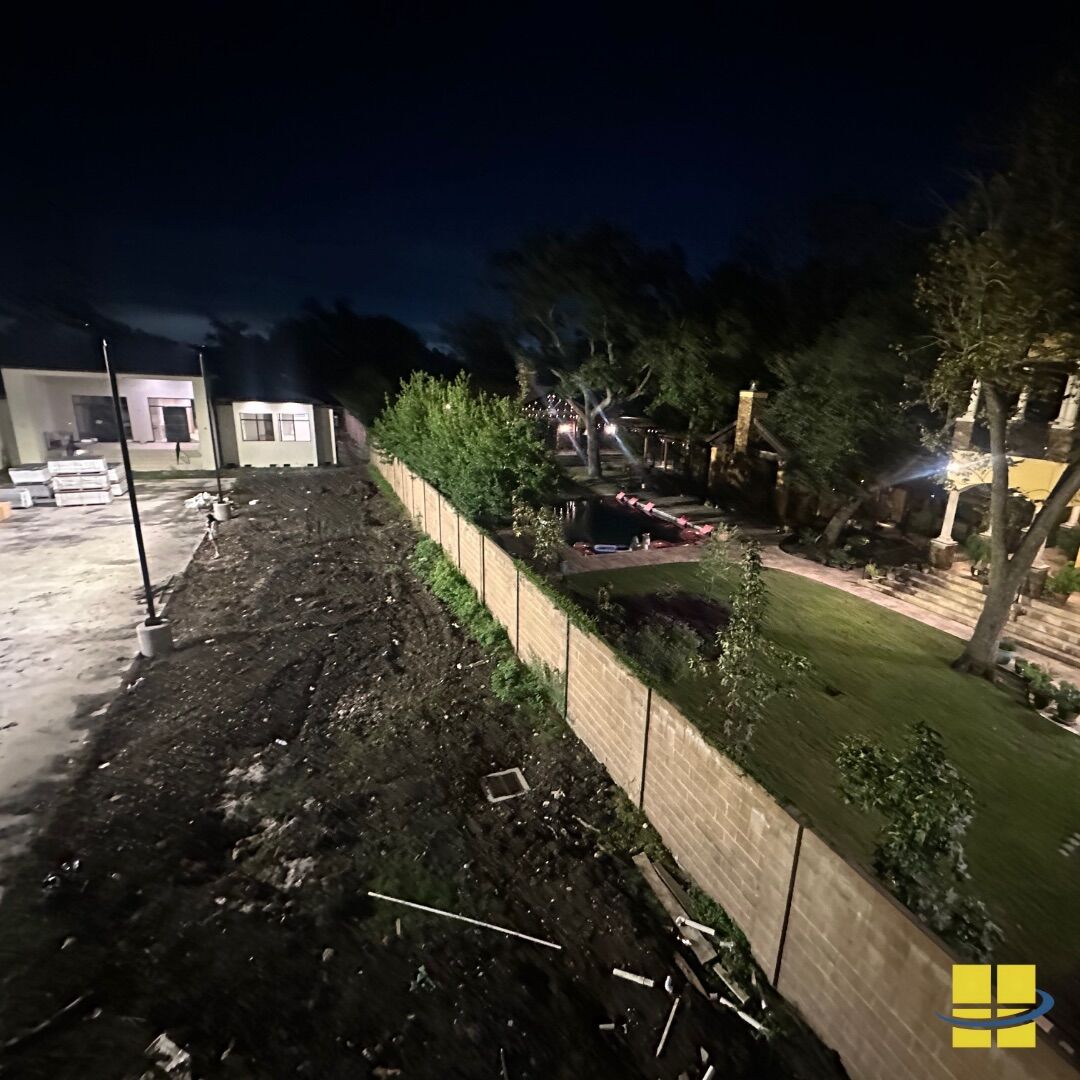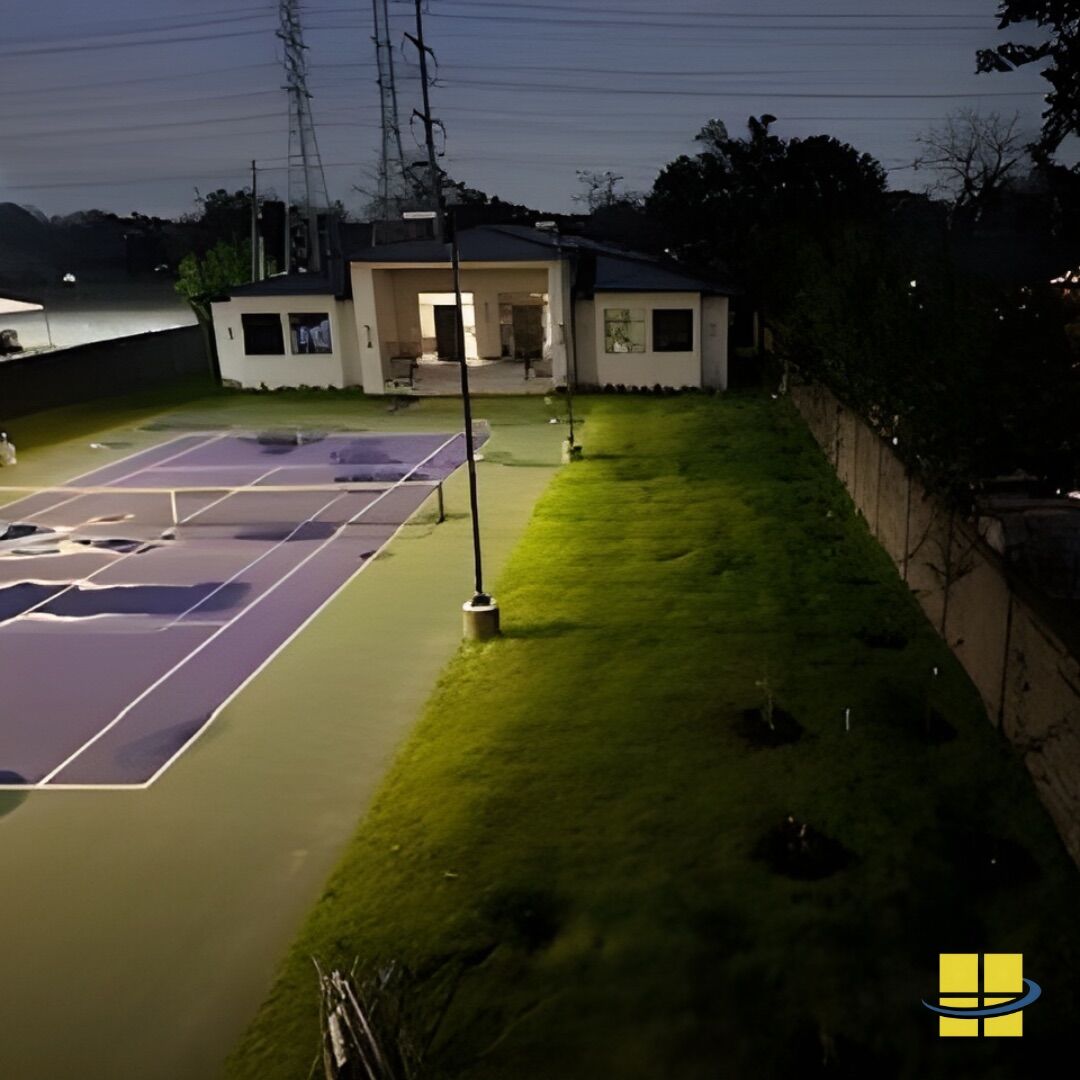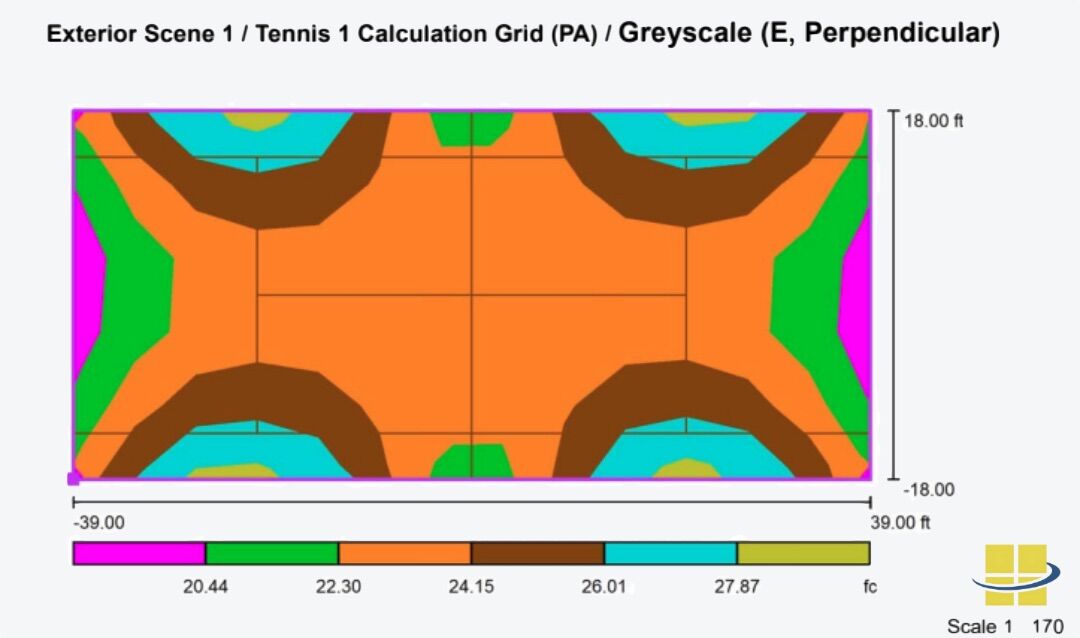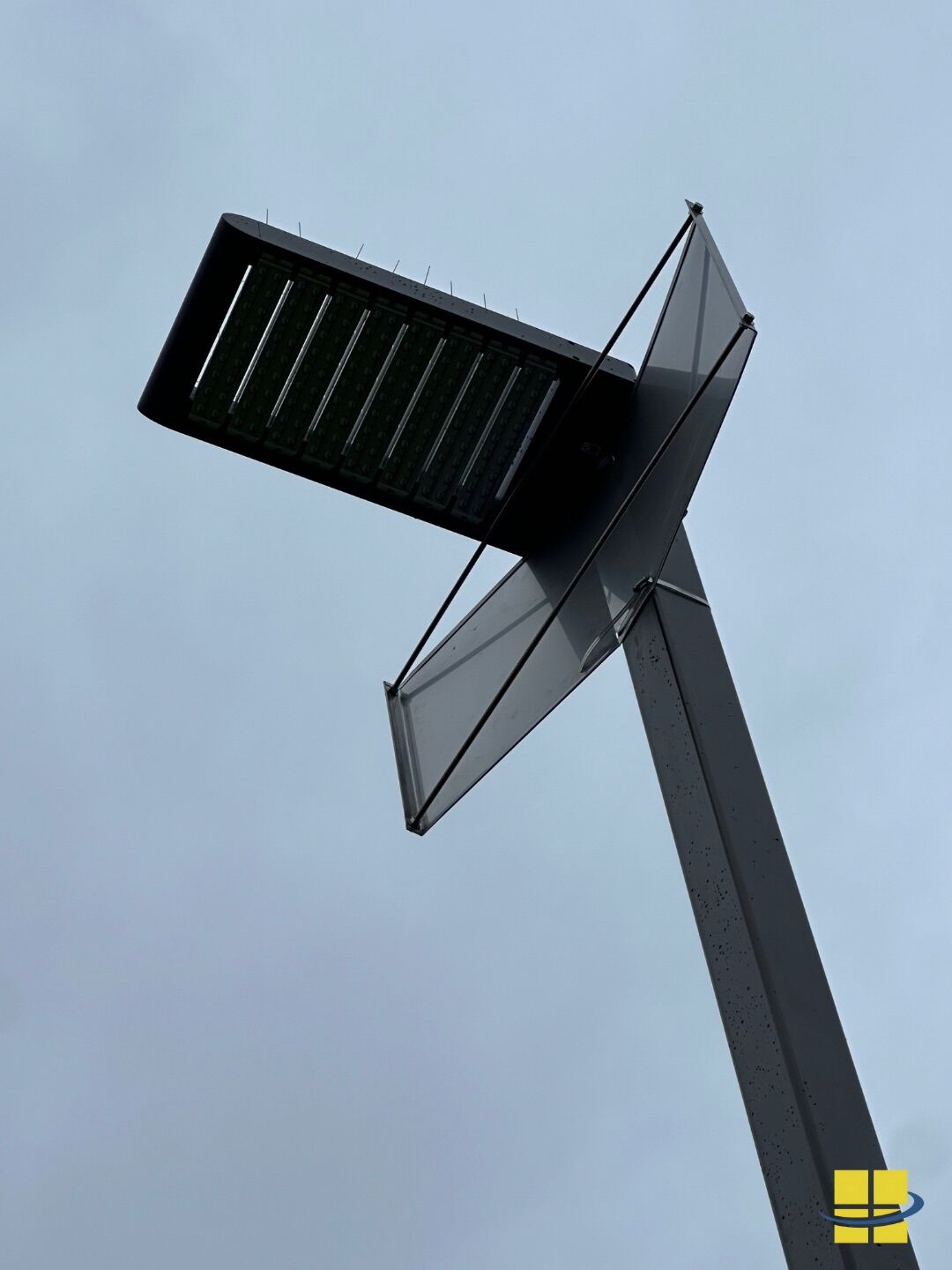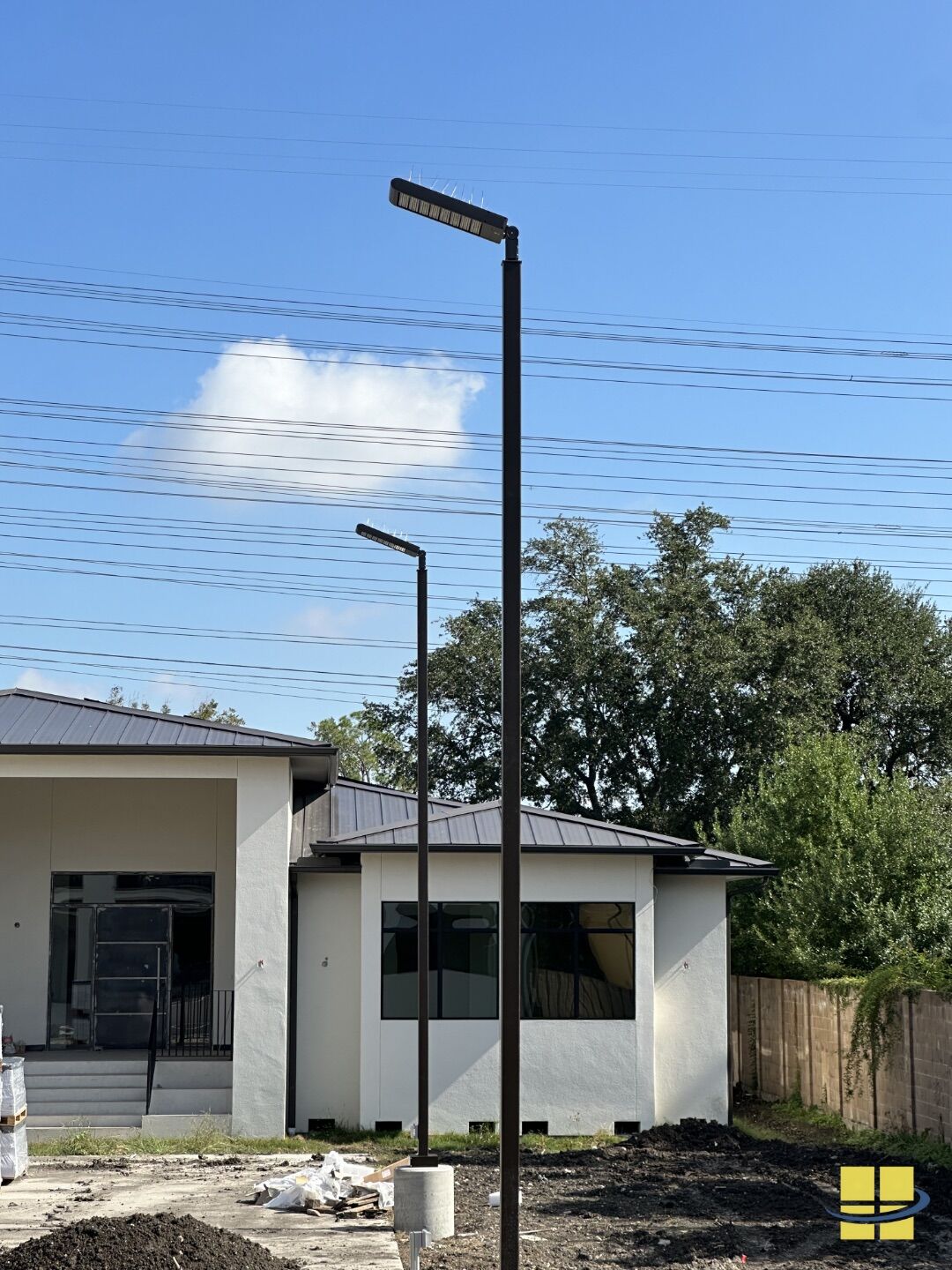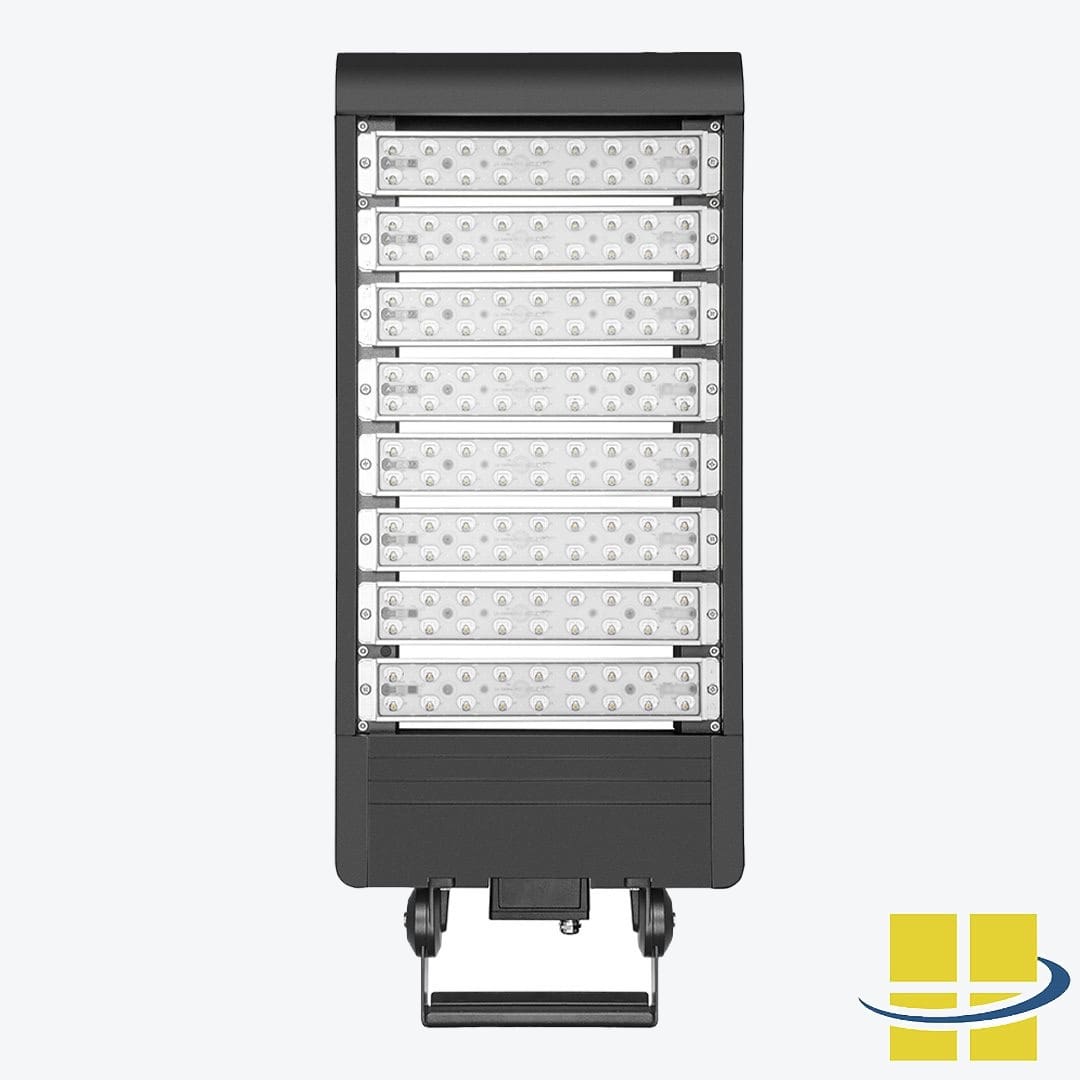This project involved the installation of a high-performance LED lighting solution for a recreational tennis court in Texas. The client selected a pre-configured lighting package with a focus on dark sky compliance but faced unexpected challenges after installation. Access Fixtures worked closely with the client to resolve light trespass issues, implement effective shielding, and introduce a remote dimming solution. This case study details how the project overcame obstacles to deliver optimal lighting performance while maintaining compliance and neighborhood harmony. Details on which LED lights for tennis court lighting was used to successfully complete this project was also given.
Key Takeaways
-
- Dark Sky Compliance & Optimal Lighting Performance: Installed (4) APTA 480W LED sports lights with superior optics and full cutoff design, achieving an average of 24 footcandles with a 1.35 max/min ratio for recreational tennis play.
- Mitigating Light Trespass & Custom Shielding: Custom-fabricated backlight shields minimized light spill into neighboring properties, fixture tilt correction aligned with the photometric design, reducing excess illumination beyond the court, and shields were painted to blend with poles for aesthetic integration.
- Enhanced Control with Smart Dimming Solutions: Implemented a Lutron power pack for remote dimming without rewiring, configured brightness limits to maintain consistent output levels upon activation, and provided recommendations for future-proofing lighting control.
Project Overview
Project Title: Recreational Tennis Court Lighting Installation
Location: Pasadena, Texas
Client Type: Private Tennis Court Owner
Objective: Install high-quality LED lighting that meets dark sky compliance requirements while mitigating light trespass concerns and ensuring optimal visibility.
What is Tennis Court Lighting?
Tennis court lighting involves the strategic placement of high-lumen fixtures to provide uniform visibility across the playing area. Proper lighting eliminates glare, prevents shadows, and ensures an even distribution of brightness, which is essential for recreational and professional gameplay.
Initial Consultation & Challenges
The client initially reached out after seeing a pre-configured lighting package online. Budget constraints were a major factor, and the client was primarily concerned with obtaining the lighting quickly rather than conducting a thorough photometric review. The package included (4) APTA 480W LED fixtures mounted on 20’ poles, delivering the necessary illumination for recreational play.
During the consultation, the client expressed a need for dark sky compliance but was less concerned about light trespass. Despite being informed of potential issues, the client opted to move forward without advanced light controls or additional shielding.
Following the installation, several challenges emerged:
- Fixture Tilt & Light Trespass: The client tilted the fixtures beyond their designed orientation, leading to excessive light spill into neighboring properties.
- Proximity to Neighboring Property: The pickleball court was located just 6-8 feet from the neighbor’s yard, exacerbating light trespass concerns.
- Neighbor Complaints & City Involvement: The neighbor, who already had a poor relationship with the client, filed complaints, prompting local authorities to issue an ultimatum for resolving the issue.
Photometric Analysis & Implementation
A photometric study confirmed that the selected fixtures would achieve an average of 24 footcandles with a max/min ratio of 1.35, ensuring adequate lighting for tennis gameplay. The APTA 480W LED sports lights were installed with T4VS optics and a 3000K color temperature, ensuring full cutoff design to meet dark sky requirements.
However, after installation, several issues arose, including:
- Fixture Tilt: The client tilted the fixtures beyond their designed orientation, causing excessive light spill into neighboring properties.
- Close Proximity: The court’s location (6-8 feet from the neighbor’s property) increased the impact of light trespass.
- Neighbor Complaints: Due to the unwanted brightness affecting their property, the neighbor escalated the issue to local authorities.
Solutions & Adjustments
Fixture Alignment & Shielding
Before Adjustments:
- The original lighting setup produced an average of 24 footcandles on the court, but the tilted fixtures resulted in excessive light spill beyond the property line, exceeding 1 footcandle in the neighboring yard.
- The excessive brightness became a nuisance, leading to an official complaint.
After Adjustments:
- Fixtures were realigned to their proper horizontal orientation, ensuring the optics functioned as designed and directed illumination strictly onto the court.
- Custom-fabricated backlight shields were installed on the fixtures to further mitigate stray light. These shields were later painted to match the poles and fixtures for seamless integration.
- The adjustments successfully reduced light trespass to below 0.1 footcandles on neighboring properties, resolving the issue with local authorities.
Dimming Solutions for Enhanced Control
Initially, the client declined dimming options. However, after experiencing excessive brightness, they requested a solution without requiring extensive rewiring.
- A Lutron Powpak was installed at the base of the poles, allowing remote dimming via a handheld controller.
- The system enabled the client to set a maximum brightness level (e.g., 70%) so that the lights would maintain this setting upon activation instead of defaulting to full brightness.
- While the client also wanted mobile app control, it was determined that this required a different dimming technology (ZigBee), which was beyond the project scope.
Final Outcome
Through fixture realignment, shield installation, and dimming integration, Access Fixtures successfully mitigated the light trespass issue while maintaining optimal illumination for pickleball play. These adjustments brought the project into compliance with local regulations and resolved neighbor concerns, ensuring a balanced lighting environment.
Additionally, the project was supported by an official invoice confirming the use of (4) APTA 480W LED sports lights with T4VS optics, mounted on 20’ poles, and equipped with SPC Spill Control backlight shields. The invoice also confirmed the inclusion of GFCI outlets, which were originally overlooked but later added to the installation.
Conclusion
This project underscores the importance of proper lighting design, photometric analysis, and adaptability in sports lighting installations. By implementing targeted solutions, Access Fixtures delivered an effective and compliant lighting system tailored to the client’s needs.
Frequently Asked Questions (FAQs)
What are the key factors in achieving dark sky compliance for tennis courts?
Full cutoff fixtures, appropriate Kelvin temperature (3000K or lower), and minimizing light trespass beyond property boundaries.
How can light trespass be controlled in court lighting?
Light trespass can be reduced by using full cutoff optics, adjusting fixture angles, installing backlight shields, and utilizing dimming controls.
What was the impact of the Lutron power pack on the project?
The Lutron power pack provided a remote dimming solution without requiring additional wiring, allowing for on-demand brightness adjustments while maintaining set output levels upon reactivation.
What is the recommended footcandle level for recreational tennis courts?
For recreational tennis courts, an average of 24 footcandles with a max/min ratio of 1.35 provides adequate illumination for gameplay while maintaining visibility and uniformity.
How do tilted fixtures affect light trespass?
Tilting fixtures beyond their designed orientation can cause excessive light spill, directing illumination outside the intended playing area and into neighboring properties. This can lead to complaints, regulatory issues, and the need for corrective shielding.
Why were backlight shields necessary for this project?
Backlight shields were installed to minimize light trespass, directing illumination downward onto the court rather than spilling into adjacent properties. These shields were custom-fabricated and painted to match the poles for seamless integration.
Can LED tennis court lights be dimmed to reduce brightness?
Yes, LED tennis court lights can be dimmed using solutions like the Lutron power pack, which allows for remote dimming control without requiring additional wiring. This helps manage brightness levels based on specific needs.
Light Trespass Concern
Light Trespass Controlled
APTA 480w Light Fixtures with Backlight Shield
Light Fixtures Before Tilt Correction
How does pole placement affect tennis court lighting performance?
Proper pole placement ensures uniform lighting coverage and minimizes shadows. In this project, four 20-foot poles were used to achieve optimal light distribution across the court while meeting dark sky compliance standards.
What steps should be taken before installing tennis court lighting?
Before installation, conducting a photometric analysis is crucial to determine the optimal fixture layout, footcandle levels, and light distribution. Ensuring compliance with local regulations and considering shielding options can prevent issues like light trespass.
Why is 3000K color temperature preferred for dark sky compliance?
A 3000K color temperature emits a warm white light that minimizes blue light emissions, reducing skyglow and helping to comply with dark sky regulations while providing excellent visibility for players.
What are the benefits of full cutoff LED fixtures?
Full cutoff LED fixtures direct all light downward, reducing glare and unwanted light spill. This improves visibility on the court while ensuring compliance with dark sky and light trespass regulations.


